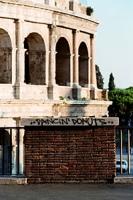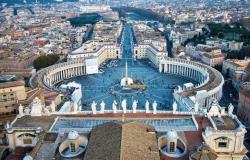Rome's mayor is trying a different approach to discourage graffiti writers and to force those who have caused damage to clean up.
One of the most common comments we get about Rome is how saddened people are to see graffiti defacing many of its monuments. While graffiti art has its value and place (and even a long history with ancient forms of graffiti found on Roman walls and monuments), new scribbles on ancient walls are not appropriate.
Gianni Alemanno is proposing a new law saying that "the best way of punishing graffiti writers or rampaging youths is forcing them to clean up the walls they deface and the areas they devastate''.
In an amendment to the its public safety bill approved by Parliament earlier this year, graffiti writers caught for a second offence face a possible jail term of six months to two years and fines ranging from 1,500 to 10,000 euros.
However, with the Italian legal system overflowing with delayed court cases and Italy's prisons already strained by the number of inmates such solutions are not really effective and will not remove the graffiti from the walls. Instead, forcing the perpetrator to clean teaches them a lesson and removes the offending writing.
Graffiti are ubiquitous in Italy's major cities, where there is scarcely a street untouched by paintings or, more commonly, scribblings and tags which costs the state and city councils time and money in clean-up jobs.
Youth Minister Giorgia Meloni said recently she had started talking to the most important figures of Italian 'street art' on how to solve the problem and differentiate between artists and vandals.
Surveys have shown that for the majority of Italian youngsters graffiti represent a form of art and not an act of vandalism.
Many see it as a legitimate form of self-expression which improves the appearance of walls, particularly in remote or abandoned urban areas.








